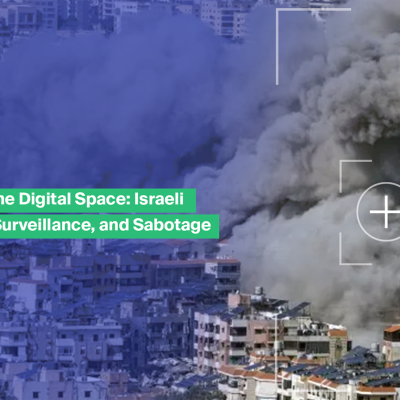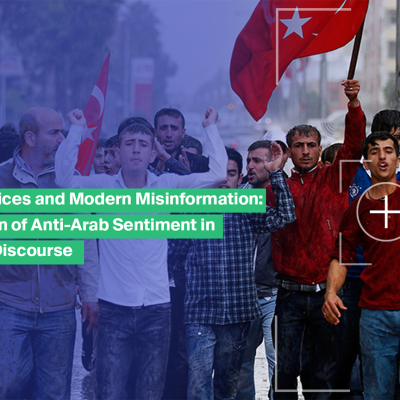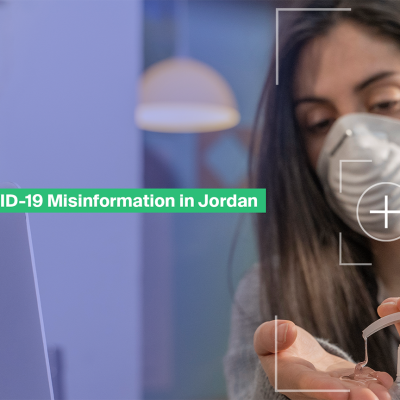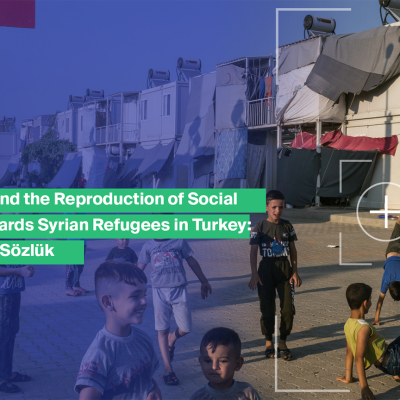Salma Daoudi is a Nonresident Fellow at TIMEP focusing on health and conflict in the MENA region. Her research primarily revolves around the weaponization of health in Syria and its repercussions beyond the locus and temporality of violence.
Behind the Smoke: How Disinformation Surrounding Syria’s Chemical Attacks Undermines Public Health
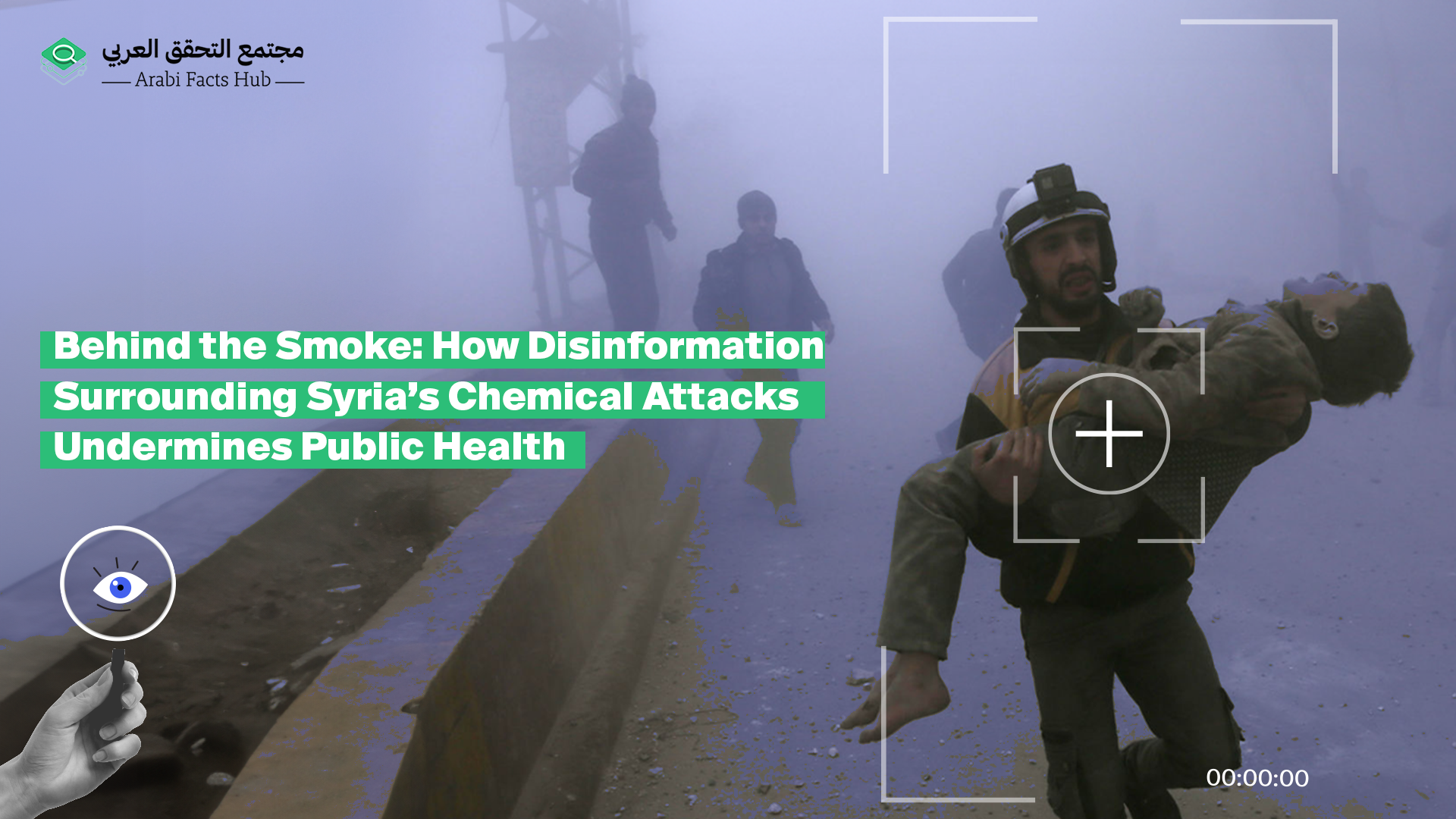
As Syrians marked the 11th anniversary of the August 21, 2013 deadly chemical attacks on the Damascus suburb of Ghouta, disinformation campaigns continue to obscure the deadly legacy of these events. The Assad regime weaponized misinformation to maintain opacity around its war crimes, confuse narratives, evade accountability, and eventually ensure its survival. This manipulation hindered urgent medical and humanitarian interventions, and undermined public trust in the health sector, hampering its ability to effectively respond to health crises.
The attacks were the deadliest chemical assaults in recent history; representing a watershed moment in the use of chemical weapons. The failure of the international response to hold the regime responsible opened the door for further assaults, such as those in Khan Sheikhoun in March 2017 and Douma in March 2018.
This article explores the strategic use of disinformation to manipulate public perceptions around the Assad regime’s chemical attacks and its ramifications for the public health sector.
A series of chemical attacks
The use of chemical weapons in Syria has been documented by human rights organizations who relied on physical evidence, testimonies, and medical accounts. Over 336 chemical attacks were carried out in the country between 2012 and 2019, according to the Global Public Policy Institute. Over 98 percent of these attacks were attributable to the Syrian regime, causing at least 1,900 direct deaths and over 18,700 injuries.
In the 2013 Ghouta attacks, the Syrian regime targeted two densely populated districts with sarin, a nerve agent, leading to suffocation, convulsion, and agonizing deaths amongst the local population. The attacks tested the international community’s resolve, which failed to hold the regime accountable.
Evidence overwhelmingly pointed to the Syrian regime as the perpetrator, though it never claimed responsibility, blaming rebel forces instead. After the attack, the US—through Russian mediation—negotiated an agreement to dismantle Syria’s chemical weapons arsenal. As a result Syria signed the Chemical Weapons Convention (CWC) in September 2013, claimed to have destroyed all critical equipment and chemical weapons facilities, and collaborated with a joint mission by the Organization for the Prohibition of Chemical Weapons (OPCW) and the UN mission to verify compliance.
Nonetheless, chemical attacks continued at alarming rates.
The 2017 Khan Sheikhoun chemical attack echoed the horrors of the Ghouta assaults of 2013. The nerve agent—believed to be sarin or a similar substance—killed over 70 civilians, including children, and left in its trail scores of injured and traumatized victims.
The spatial distribution of chemical attacks in Syria between 2012 and 2019 and associated casualties. Source: AJLabs.
The large-scale attack reignited global debates on accountability, the enforcement of international norms, and the urgent need to address the rampant use of chemical weapons in the Syrian war. While the international community grappled with the blatant violation of international norms, the Syrian regime and its allies engaged in a concerted effort to deny its involvement and spread disinformation about the attacks. This denialism was not merely a tactic to deflect blame. Rather, it became a strategic tool by the regime to manipulate narratives, hinder humanitarian efforts, and serve its political and military goals.
At the crossroad of battlefields
The Syrian regime’s informational warfare relied predominantly on causing enough confusion to cast doubt on the plausibility of the attacks and its own involvement. Its coordinated dissemination of disinformation through traditional media was coupled with viral campaigns on social media platforms.
Organized disinformation campaigns, supported by pro-Russian and pro-government media, specifically targeted frontline rescue workers, doctors, and human rights defenders. The primary strategy employed involved portraying aid workers as either terrorists or foreign operatives. The Syria Civil Defense, known as the White Helmets, a volunteer organization dedicated to rescuing civilians in conflict zones within Syria, was repeatedly accused by state-controlled media of using chemical weapons in Idlib, Hama, and Aleppo, without providing evidence of their implication in any capacity. The Syrian regime and its allies provided unreliable information, resorting to conspiracy theories and the manipulation of satellite imagery or fake material.
The regime used mainstream media to portray evidence of chemical attacks as a politically motivated and rebel-orchestrated campaign to justify airstrikes by the US-led coalition. Outlets affiliated with Iran and Russia such as Al Masdar News, Russia Today (RT), Sputnik, and Mehr News were instrumental in advancing the Syrian regime’s main talking points. Al Masdar News published an article in April 2017, shortly after the Khan Sheikhoun attacks, arguing that there were severe inconsistencies concerning the use of a nerve agent in that attack. The article questioned footage from first responders, claiming that injuries shown were inconsistent with Sarin gas exposure, accusing the White helmets of collaborating with foreign powers and rebel groups to frame the Syrian regime. The absence of protective gear worn by White Helmets’ first responders was, for instance, presented as evidence of a staged scene, rather than a result of blocked humanitarian aid.
The state-controlled Syrian Arab News Agency (SANA) echoed these attempts to discredit the organization and spread disinformation in 2018 stating that the White Helmets deliberately killed children to “use them in staged videos about alleged chemical attacks, whether in Khan Sheikhoun or in other Syrian areas.”
More recently, a 2022 RT article accused the White Helmets of conspiring with Western nations to strike the Syrian army, and planning to train Ukrainians to fabricate “a false flag attack.” Earlier articles claimed the US used similar allegations to justify airstrikes against Syria and framed Russia in Ukraine.
Sputnik, the Russian state-owned news agency, has spread similar disinformation. In 2018, it published articles with testimonies collected by the Russian Reconciliation Center for Syria, claiming that no patients displayed signs of chemical poisoning following the 2018 Douma attacks, contradicting statements from health personnel who treated the victims. Such testimonies could very well be the result of intimidation, as the Syrian regime is said to have pressured medics to publicly deny the occurrence of the gas attack in Douma, even while health facilities were overwhelmed with a severe inflow of suffocating and burned victims.
These accusations contributed to the erosion of public trust in healthcare systems. In addition, communities affected by chemical attacks and diseases struggled to reconcile their experiences with the state-promoted narrative and their willingness to seek timely medical assistance. This carries significant implications for health-seeking behaviors, vaccination rates, and adherence to public health guidelines.
How denialism hampers urgent medical interventions
The fragmentation of the Syrian public health system, precipitated by the regime’s deliberate targeting of health facilities and besiegement of cities, has severely hampered the flow of information needed for health facilities to function properly.
This means that the very information crucial to the work of healthcare providers is distorted, manipulated, and weaponized for political ends. From the identification of chemical agents used in the attacks to the implementation of safety protocols, providers had to navigate a landscape of uncertainty where the veracity of information directly impacted the effectiveness of their response. Inconsistent information about the nature of the injuries, preventive measures, and treatment protocols undermined providers’ ability to mount an effective response.
Testimonies from medical personnel on duty during the 2013 Ghouta attacks point out the complete confusion in the face of the large influx of suffocating patients that overwhelmed local health facilities, many of whom were foaming at the mouth, choking, convulsing, and suffering from impaired vision. The engineered environment of information chaos hindered the accurate identification and treatment of chemical exposure symptoms.
Many aid agencies operating in areas outside regime control were forced to cease operations or had their funding cut as a result of disinformation campaigns targeting them. While some hospitals still managed to purchase new supplies of antidotes to treat nerve agents following the Ghouta attacks, the Syrian regime’s declaration that it had agreed to give up its chemical arsenal in 2013 gave local health authorities a false sense of safety. Consequently, the medication needed to treat chemical exposure expired and was not re-stocked, causing significant healthcare access gaps during subsequent chemical attacks. Starting 2017, the World Health Organization has worked on distributing medical kits in besieged areas of rural Damascus and in northern Syria; however, not only do some chemical agents such as chlorine or blister lack antidotes, many areas across Syria have also remained unreachable to intergovernmental organizations.
The enduring health challenges faced by Syrians extend far beyond the initial impact of chemical attacks. Exposure to toxic agents can result in lingering health effects manifesting as chronic respiratory conditions, neurological disorders, and other persistent conditions. Further research is needed to assess the exact long-term impacts of exposure to chemical weapons in the Syrian context, but the Syria Justice and Accountability Center reports physicists’ concerns about the significant rise in the number of children born with birth defects since 2015. Yet, disinformation hinders the conduct of further comprehensive studies and perpetuates a cycle of suffering, impeding the restoration of normalcy for affected populations. As a matter of fact, denialism not only obstructs accurate diagnosis and treatment, but also contributes to the exacerbation of chronic conditions, as the lack of official acknowledgment hinders the development of targeted healthcare strategies.
This inflicts a unique form of psychological warfare on survivors, not only by discrediting the trauma resulting from chemical exposure and the loss of loved ones, but also deepening the sense of distrust and betrayal resulting from the lack of accountability and justice.
Accountability as a public health emergency
The exploitation of distorted health narratives for political ends undoubtedly fractures the bond between healthcare providers and the communities they serve. In the Syrian context, the manipulation of these narratives showed the prioritization of political objectives over public welfare.
The erosion of trust in health information further complicated the prevention and containment of current disease outbreaks, allowing for their rapid spread at rates exceeding local capacities. The paralysis of the healthcare system during major outbreaks was vividly demonstrated by the Syrian government’s response to the COVID-19 pandemic. Conflicting narratives, coupled with the lack of transparent communication, hindered the implementation of a coordinated response. For instance, the regime initially refused to acknowledge the pandemic had reached its borders and silenced dissident voices, even while northern Syria was experiencing a severe wave outpacing undersupplied health facilities.
Under international humanitarian law, the Syrian regime has an obligation to refrain from attacking medical facilities and personnel as per Security Council Resolution 2286 of 2016 and to refrain from the use of chemical weapons. By breaching these, and spreading misinformation to undermine public health response to the public health crises it is contributing to, the Syrian regime has effectively intensified the impact of its attacks on public health. Yet, holding war crime perpetrators accountable in the context of strategic disinformation remains challenging.
The lack of a transparent and truthful narrative obstructs international efforts to pursue justice for the victims, reinforcing a culture of impunity that perpetuates the cycle of human rights abuses. Concerns surrounding the continued use of chemical weapons in Syria are salient, especially given the lack of concrete legal and political consequences. With access to the field being severely restricted and survivors’ testimonies purposefully discredited by pro-government actors, legal pathways to justice seem obstructed.
Leading efforts of Syrian legal experts, activists, and rights groups are laying the groundwork for an initiative aiming to establish a treaty-based tribunal to try actors reported to have used chemical weapons to harm civilian populations. This would constitute an essential step toward not only closing the impunity gap and deterring future use, but also lifting the veil on the real scale and extent of the harmful health consequences caused by these attacks.
